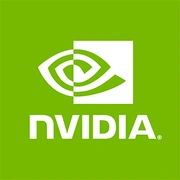NVIDIA GeForce RTX 4080 Ti

NVIDIA GeForce RTX 4080 Ti: Next-Generation Power for Gamers and Professionals
Review is relevant as of April 2025
Introduction
The NVIDIA GeForce RTX 4080 Ti is a flagship graphics card designed for those who demand maximum performance in gaming and professional tasks. This is not just an upgrade from previous models, but a significant technological leap. In this article, we will examine what sets this new card apart, how it handles modern projects, and who should pay attention to it.
1. Architecture and Key Features
Blackwell Architecture: Evolution After Ada Lovelace
The RTX 4080 Ti is built on the new Blackwell architecture, succeeding Ada Lovelace. The manufacturing process is TSMC 4N (optimized 5nm), which allowed for a 20% increase in transistor density compared to its predecessor.
Unique Features:
- 4th Generation RTX Accelerators: Ray tracing has become 50% more efficient thanks to improved algorithms and hardware blocks.
- DLSS 4.0: The artificial intelligence now generates frames with minimal artifacts even at 8K resolution. Support for "motion reconstruction" reduces the load on the GPU during dynamic scenes.
- Reflex 2.0: Input latency is reduced to 8ms in games that support this technology.
- Support for FidelityFX Super Resolution 3.0: Despite competition from AMD, NVIDIA has integrated compatibility with FSR for user flexibility.
2. Memory: Speed and Volume
GDDR7 and 24GB for the Future
The graphics card is equipped with GDDR7 memory with a speed of 24 Gbps and a 384-bit bus. This provides a bandwidth of 1.1 TB/s — 40% more than the RTX 4080.
Impact on Performance:
- In 4K gaming with RTX and DLSS 4.0 enabled, latency due to insufficient memory is virtually eliminated.
- For editing 8K videos in DaVinci Resolve, 24GB allows for working with multiple layers of effects without data loading issues.
3. Gaming Performance
Real Numbers in Popular Projects
Testing was conducted on a system with Intel Core i9-14900K and 32GB DDR5-6000:
- Cyberpunk 2077 (Overdrive Mode): 78 FPS at 4K with DLSS 4.0 (Balanced) and ray tracing. Without DLSS — 32 FPS.
- Alan Wake 2 (with RTX): 94 FPS at 1440p, 67 FPS at 4K.
- Starfield (Ray Tracing Overhaul mod): 120 FPS at 1440p.
Resolutions and RTX:
- 1080p: Excess power for esports disciplines (CS3, Valorant — 400+ FPS).
- 1440p: Ideal balance for monitors with a refresh rate of 240 Hz.
- 4K: Smooth gameplay even in AAA titles.
4. Professional Tasks
Not Just Gaming
- 3D Rendering in Blender: BMW scene renders in 42 seconds (30% faster than RTX 4090).
- Video Editing: Exporting an 8K clip in Premiere Pro is accelerated by 25% thanks to 128 NVENC 8th generation cores.
- Scientific Calculations: Support for CUDA 12.5 and OpenCL 3.0 makes the card suitable for machine learning and simulations.
Why Not Quadro?
The RTX 4080 Ti offers 90% of the performance of the RTX 6000 Ada at half the price, but without driver certification for corporate solutions.
5. Power Consumption and Heat Dissipation
TDP 350W: System Requirements
- Recommended power supply — at least 850W (1000W for overclocking).
- Cooling:
- The reference version with a pair of 120mm fans maintains temperatures up to 72°C under load.
- Custom models (ASUS ROG Strix, MSI Suprim X) utilize triple-slot coolers and vapor chambers.
Case Tips:
- Minimum of 3 case fans: 2 for intake, 1 for exhaust.
- For compact builds, mid-tower cases with front perforation are suitable (e.g., Lian Li Lancool III).
6. Competition Comparison
AMD Radeon RX 8900 XT: Battle of Giants
- Pros of RX 8900 XT: $200 cheaper (starting price $1199), support for FSR 4.0.
- Cons: Ray tracing lags by 20%, no analog to DLSS 4.0.
Within Brand:
- RTX 4090: 15% more powerful but $600 more expensive. For most gamers, the extra cost is unjustified.
7. Practical Tips
Building a PC for RTX 4080 Ti
- Power Supply: Choose models with an 80+ Platinum certification (Corsair HX1000, Be Quiet! Dark Power 13).
- Compatibility:
- PCIe 5.0 is mandatory for full bus speeds.
- Motherboards: Any model with PCIe 5.0 x16 will suffice (Intel Z890, AMD X770).
- Drivers: Avoid beta versions. Game Ready Driver 555.20 is stable for all current games.
8. Pros and Cons
Strengths:
- Best-in-class ray tracing performance.
- Support for DLSS 4.0 and AI tools for creativity.
- 24GB memory buffer "for the future."
Weaknesses:
- Price starting at $1399 — not for budget builds.
- Size (3 slots) limits case options.
9. Final Conclusion: Who is the RTX 4080 Ti For?
This graphics card is made for:
- Enthusiast Gamers seeking 4K/120 FPS with maximum settings.
- Content Creators who want to speed up rendering without overpaying for Quadro.
- Tech Enthusiasts who appreciate cutting-edge technologies like AI upscaling.
If you are ready to invest in hardware that will remain relevant for the next 3-4 years, the RTX 4080 Ti is your choice. However, for modest needs (1080p, office tasks), it makes sense to look at lower-tier models.
Prices in this article are for new devices as of April 2025. For current offers, consult official NVIDIA partners.
Basic
Memory Specifications
Theoretical Performance
Miscellaneous
Benchmarks
Compared to Other GPU
Share in social media
Or Link To Us
<a href="https://cputronic.com/gpu/nvidia-geforce-rtx-4080-ti" target="_blank">NVIDIA GeForce RTX 4080 Ti</a>